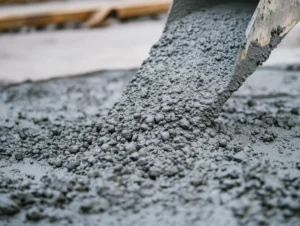Problem, Agitation, Solution (PAS) Formula
You’ve likely heard about polypropylene fibers but may not fully understand their significance. These fibers revolutionize modern construction and engineering due to their lightweight, strength, and versatility. Let’s demystify them so you can leverage their benefits effectively.
Polypropylene fibers are synthetic fibers made from a thermoplastic polymer called polypropylene. Known for their low density, excellent chemical resistance, and durability, these fibers find applications in concrete reinforcement, geotextiles, and more.
But why are they becoming so popular? Let’s dive into their unique properties and diverse uses!
Frequently Asked Questions About Polypropylene Fibres
1. What are polypropylene fibers made of?
Polypropylene fibers are manufactured from polypropylene resin, a thermoplastic polymer derived from propylene gas in the petroleum refining process. They’re produced through processes like melt spinning, where the polymer is melted, extruded, and stretched into fine fibers.
2. How do polypropylene fibers enhance concrete performance?
When added to concrete, polypropylene fibers improve crack resistance, reduce shrinkage, and enhance durability. Their hydrophobic nature prevents water absorption, thus resisting freeze-thaw cycles effectively.
3. Are polypropylene fibers eco-friendly?
Yes, they are recyclable and contribute to sustainable practices by increasing the longevity of concrete structures, thus reducing overall resource consumption.
4. What industries use polypropylene fibers?
These fibers are prevalent in:
- Construction: Reinforcing concrete and asphalt.
- Textiles: Manufacturing carpets and nonwoven fabrics.
- Agriculture: Used in erosion control and geotextiles.
5. How do they compare to traditional fibers?
Polypropylene fibers outperform traditional options like steel in lightweight applications, corrosion resistance, and cost-effectiveness.
Dive Deeper: Unique Properties of Polypropylene Fibres
Lightweight Strength
Polypropylene fibers boast an impressive strength-to-weight ratio, making them ideal for applications requiring lightweight reinforcement.
Chemical and Corrosion Resistance
These fibers resist alkalis, acids, and salts, ensuring longevity in chemically aggressive environments. This is particularly crucial in marine construction and wastewater treatment projects.
Thermal and UV Stability
While not inherently UV stable, specialized coatings can enhance their resistance, making them viable for outdoor applications.
Flexibility in Manufacturing
Available in monofilament, multifilament, and fibrillated forms, polypropylene fibers cater to diverse industrial needs.
Applications of Polypropylene Fibers
1. Construction and Infrastructure
In concrete, they minimize cracking during drying (shrinkage cracking), increase impact resistance, and enhance structural integrity.

2. Geotextiles
Used in erosion control, drainage systems, and soil stabilization, these fibers form a critical component of modern geotechnical engineering.

3. Agriculture
From crop covers to soil stabilization mats, polypropylene fibers are indispensable in protecting and optimizing agricultural resources.
4. Packaging and Industrial Use
They’re used in ropes, filters, and industrial fabrics due to their strength and resilience.
More FAQs and Insights
Can polypropylene fibers replace steel reinforcement?
While not a direct substitute, they complement steel by reducing micro-cracking and increasing tensile strength.
Are they expensive?
Polypropylene fibers are cost-effective, especially when considering their long-term benefits like reduced maintenance and extended structure lifespan.
How do I choose the right type of polypropylene fiber?
Consider the application—monofilament for concrete, fibrillated for geotextiles, and so forth.
Conclusion
Polypropylene fibers are a game-changer in construction, textiles, and beyond. Lightweight, durable, and cost-effective, they provide solutions for modern engineering challenges. For your next project, consider how these versatile fibers can add value.
If you’re curious to learn more about their applications or seek tailored solutions, stay tuned for future updates and product offerings from Fiberego.
[Contact Us to Explore Polypropylene Fibers Further]



